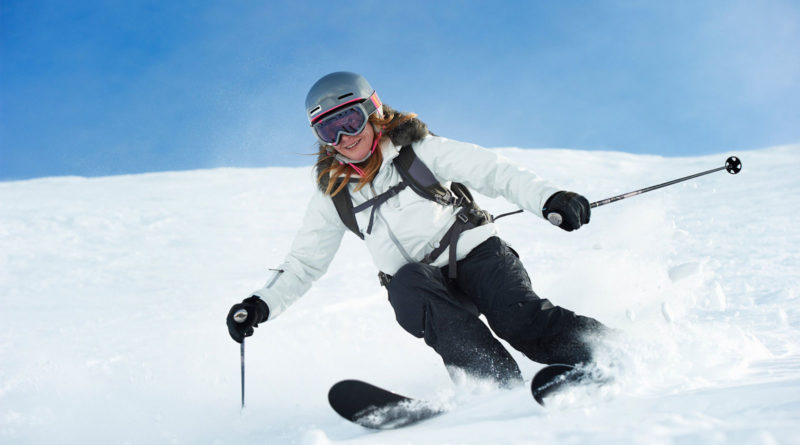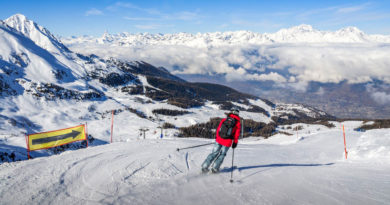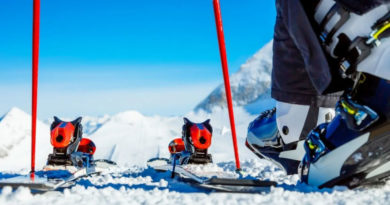How Should Ski Pants Fit?
It is a question that should have an obvious answer to it; neither too tight nor too loose, a happy medium, snug, etc. But if it was that simple, why can so many people be seen wearing the wrong fit on the slopes?
Ski pants have a practical aspect to them, as well as a social aspect. The practical, of course, is that they keep you warm and provide the mobility you want during your skiing adventures. So you want them to be flexible and durable. The social, on the other hand, is that they make you look good and get you noticed. They are a part of your first impression. If you want them to be stylish, even a bit flashy would do.
You also want them to be breathable and comfortable. We have all seen how people look cramped in their pants, frustrated with life, making a face as if nothing matters, and wanting to jump off the cliff. You can tell that their layers are not comfortable.
The Overall Fit
Unlike snowboard pants, ski pants are designed to fit a little snugly to achieve maximum speed and aerodynamics. Snowboard pants, on the other hand, are a little bit baggy and provide a range of motion for snowboarders performing tricks. Learn more about ski vs snowboard pants here. However, your ski pants should provide enough room to wear layers underneath. Also, pants that are too tight are not going to be comfortable. With the layers and pants on, you should not feel any restrictions on the knees and waist. It is also important to note that your pants should not feel loose even with the layers underneath. Loose-fitting pants are not going to keep you warm.
Layering
Your ski pants should provide enough room for layering because you are supposed to wear layers underneath your pants. These layers include a base layer and a mid-layer. The base layer is usually made of polyester or nylon fabric designed to be smooth against your skin. This is the layer that touches your skin. The function of a base layer is to wick sweat from your body and keep your skin dry. Next to the base layer is the mid-layer. This layer provides insulation and keeps your lower body warm. The mid-layer is optional because you might not need it on a warmer day. Learn more about how to layer for skiing here.
Length
Your ski pants should be a little longer than your day-to-day pants because they are supposed to cover your ski boots. A good rule of thumb is to get a pair that is 4-5 inches longer than the regular pants that you wear around town. Ski pants often come with zipper legs that allow your pants to fit over your ski boots. So, always fit your pants while wearing ski boots. However, don’t go for too long pants as the legs may catch on your skis, bindings, and boots. This will be subjected to more wear and tear. It is always a good idea to wear your pants with your boots and binding before making a purchase.
Leg Openings
The legs of your pants should fit snugly over your boots so that they keep snow and wind out or anything else from sneaking in. Keep in mind that the ski pants legs have a loose fit and they don’t provide insulation to your ankle area. You only get insulation from your mid-layer. You can also combine your pants with snow gaiters for maximum snow and wind protection. It is an extra piece of fabric that acts as a guard at the bottom of your pants near the leg openings. It provides an extra layer of protection from snow and wind because it fits snugly over your boots. Snow gaiters usually come with zippers and adjustable straps so you get the ideal fit.
Other things to consider
Skiers demand a lot from their pants. We all look for different features in them like the fabric material, water resistance, pockets, and whatnot. But in doing so, we often overlook the fitting of our ski pants which plays a couple of key functions: mobility and keeping the snow and wind out.
If you have any idea of snow getting in your shoes or back, you would know the annoyance I am mentioning here. A good fit of the pants should perform this function adequately. But with tons of options on the market, choices do become tricky.
Some pants look bulkier due to having an inner liner. Some pants look bulkier because of the base layers. Nevertheless, you should have enough room in your pants to comfortably bend, twist, squat, and sit.
The waste of your pants should fit adequately with no gaps. Ski pants have various adjustment methods for this purpose like belt loops, Velcro straps, etc. Your ski pants should be long enough to cover your boots. Brands offer variations in lengths to compensate for different body types.
In any case, wind and snow shouldn’t be able to sneak in. Bibs are popular because they don’t let snow in from the back of the pants. When you receive your ski pants, try them on with your ski jacket to see if they fit properly and if they look good with it as well.
Your snow pants should sit just below your ankle bone with the jacket comfortable over the pants between your waist and hips. Besides all that, pants also have slim, regular, and baggy-fitting. Make sure to check for that before ordering.
Conclusion
So in conclusion, your ski pants should neither be restrictive nor too loose. They should provide enough room for layers underneath so that you don’t feel restrictive. You want your pants to be as comfortable as possible without being too baggy. You don’t want to feel any tension in the knees and waist. Anything that restricts your movements while skiing is not good. You also want your pants to be a little longer so that they can cover your boots. Finally, the leg openings should be wide enough to fit snugly over your ski boots to seal out snow and wind.




